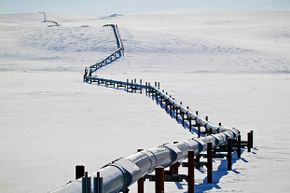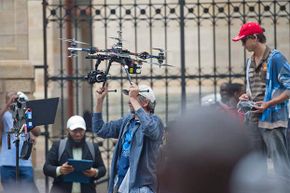Welcome to the drone economy. Originally developed for covert military operations overseas, unmanned aerial vehicles (UAVs) – better known as drones – are coming home. In the next three to five years (2018 to 2020), analysts expect the domestic commercial use of drones to boom across dozens of industries, from law enforcement to Hollywood moviemaking.
The last remaining obstacle to drone dominance in the United States is the Federal Aviation Administration (FAA), which has banned the commercial use of drones above 500 feet (152 meters) and beyond visual sight of the operator [source: Jansen]. Businesses that want to use drones either have to hire licensed pilots or apply for an FAA exemption [source: FAA].
Advertisement
Drone advocates say the overly strict regulations are stifling innovation. Under pressure from the Obama administration, the FAA is expected to release new rules in September 2015 that could loosen restrictions on commercial drones and initiate a full-on drone boom.
The widespread commercial use of drones is predicted to inject $13.6 billion in the U.S. economy over the next three years and create 70,000 jobs in both drone manufacturing and flight operations [source: AUVSI]. Future drone pilots are already enrolling by the hundreds in UAV training programs at colleges like Embry-Riddle Aeronautical University in Florida and the University of North Dakota [source: Kolpak].
You might be surprised by who's making use of drone technology Here are 10 UAV jobs that are set to explode over the next decade.










